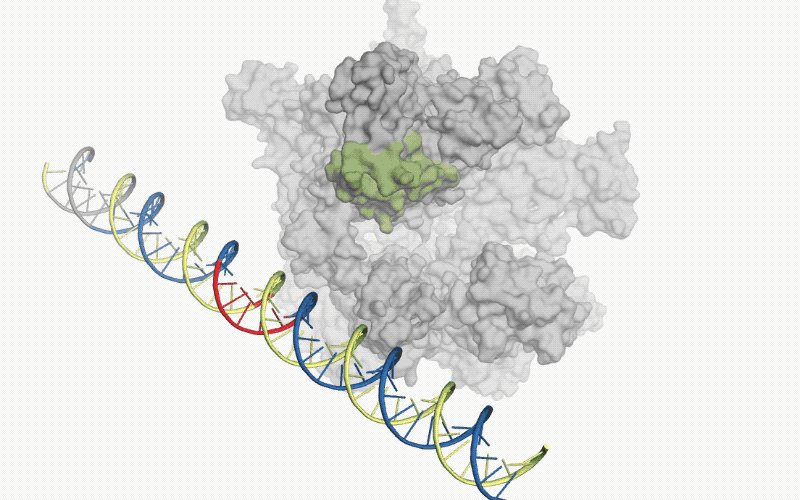A hidden movement in the molecule that makes RNA

A depiction of the mechanism that separates DNA strands before RNA is copied, modeled on crystal structures derived by the researchers.
When genes are activated, a molecular machine called the RNA polymerase latches on to DNA sequences called promoters and separates, or melts, DNA strands to begin copying the gene’s sequence into RNA. Until now, it has not been clear how the polymerase is able to find these rare promoters in a sea of irrelevant DNA. But a recent study from The Rockefeller University reveals new details about the machinery’s movements, reversing a long-held assumption and offering new insights into how it optimizes the search.
RNA polymerase has a flexible clamp component that can open and close, and scientists thought that it remained open during the early stages of transcription. However, research associate Andrey Feklistov, working with Jack Fishman Professor Seth Darst and colleagues, has discovered that the clamp closes briefly so that the polymerase can dock on to the DNA and initiate DNA melting. Next, the clamp reopens to load one of the DNA strands into the region that assembles the RNA, then closes again to finalize the melting process and continue with transcription.
The researchers propose that this extra closure—a movement driven by thermal fluctuations that does not require external energy—helps the RNA polymerase identify promoters efficiently: Its open form rapidly surveys the genome, occasionally closing the clamp to confirm the presence of a promoter before proceeding to separate the DNA strands.



